How To Create A Seamless Connection Between Your Pool And Garden
Your pool and garden don’t need to feel like two separate areas. When designed with intention, they can work together to form one flowing, functional outdoor space — offering beauty, balance, and better usability. Whether you're starting from scratch or refreshing an existing backyard, a seamless transition between your pool and garden not only improves aesthetics, but can also enhance liveability and add value to your home. Here’s how to plan and design a pool area that blends effortlessly with your surrounding garden, creating a cohesive outdoor retreat.
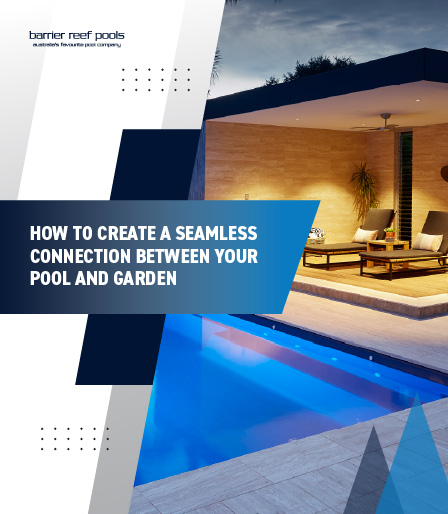
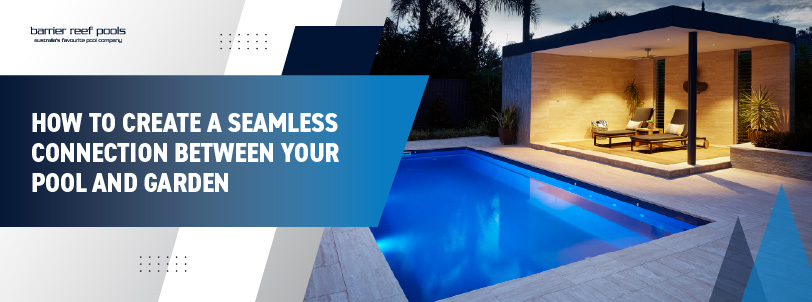
1. Start With a Unified Layout
The key to a seamless connection is treating the pool and garden as one space rather than designing them in isolation. During the planning stage, map out how each element will interact — pathways, lawn, plants, pool shape, deck or patio, and entertaining areas.
Think about:
- How people will move between zones
- Whether you want clear sightlines across the space
- If you’re aiming for symmetry or a more organic flow
- Where the focal points should be
Even a small change in orientation or shape can impact how well the pool sits within the broader landscape, so layout decisions are best made early.
2. Use Consistent Materials
One of the most effective ways to visually tie your pool and garden together is by using a consistent material palette. Choose a set of hardscaping materials — such as stone, timber, concrete, or tiles — and carry them through both areas.
For example:
- Match pool coping with garden edging
- Use the same decking timber for both pool surrounds and garden seating
- Echo paving materials from the poolside into your paths or firepit area
Consistent finishes create visual harmony and make the space feel unified rather than piecemeal.
3. Create Soft Transitions With Planting
Plants play a huge role in blending the hard lines of a pool with the softness of the garden. Border planting, feature greenery, and layered landscaping help create a natural flow and soften edges without blocking views or access.
Use planting to:
- Break up straight edges with curves or texture
- Provide shade and privacy without enclosing the space
- Draw the eye through the space with varied heights and tones
Be mindful of maintenance when selecting species. Choose plants that don’t drop excessive debris into the pool and can handle splashes of chlorinated or saltwater. Native grasses, succulents, palms, and low-maintenance hedges are all great options.
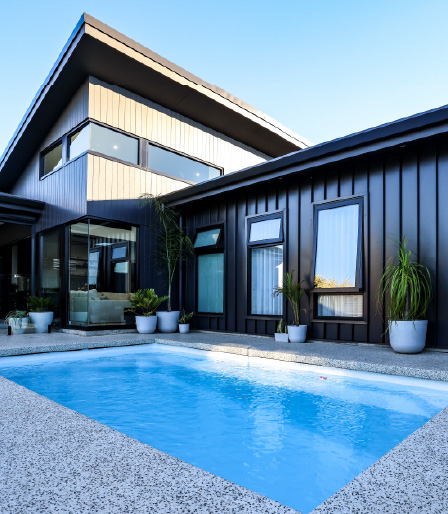
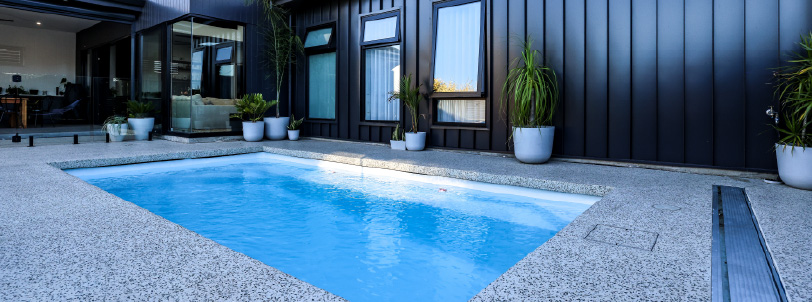
4. Choose Pool Fencing That Blends In
Safety is non-negotiable, but your pool fencing doesn’t have to be an eyesore. Frameless glass fencing is a popular choice for maintaining sightlines and visual openness. If you’d prefer something with a bit more texture or screening, consider powder-coated aluminium in a colour that complements your garden scheme.
Strategically placed fencing can even enhance the design if it feels intentional — wrapping around garden beds or integrating with raised planters. Wherever possible, avoid placing the fence as a barrier between the pool and garden. Instead, aim to have it wrap around the outer perimeter of the space.
5. Use Lighting To Link Spaces
Lighting is often the unsung hero of good outdoor design. A well-lit backyard isn’t just safer — it feels more cohesive and inviting, especially in the evenings.
To create connection:
- Carry similar lighting fixtures or styles through both the pool area and garden
- Use low-level path lights to guide movement between zones
- Highlight trees, architectural plants, or feature walls to create a sense of continuity
Soft, warm lighting can also help blur the edges between hard surfaces and greenery, giving the space a more relaxed, natural feel.
6. Incorporate Water Features and Garden Elements
Blending a water feature into your garden or pool zone helps tie the two spaces together. A spillover spa, sheer descent waterfall, or garden pond near the pool can act as a linking element.
You might also:
- Extend the pool wall into a raised garden bed
- Build a bench or seating ledge that backs onto both pool and plantings
- Use large pots or garden sculptures to echo shapes used in the pool area
These elements create repetition and rhythm, which help unify the entire landscape.
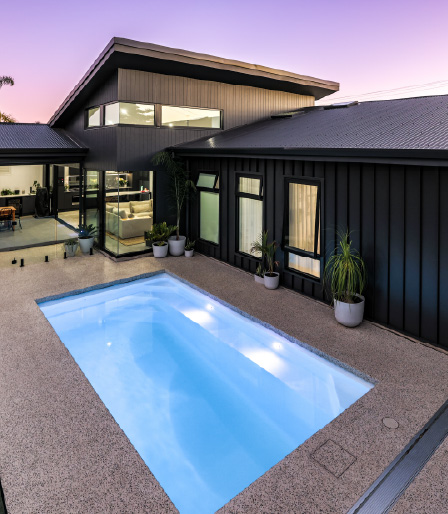
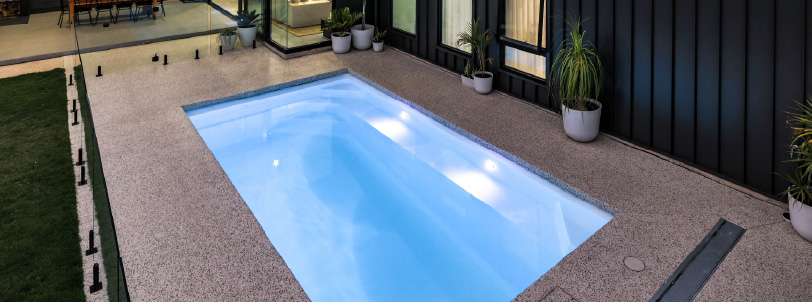
7. Blur Boundaries With Level Changes
When done right, level changes can be a powerful design tool. Raised garden beds, sunken lounge areas, or multi-level decking can help define zones without physically separating them.
For instance:
- A slightly raised garden bed next to a pool deck can create a sense of enclosure while keeping the space open
- Tiered planting can ease the transition from hard surfaces to natural ones
- A few gentle steps from one area to another adds interest while maintaining connection
Just make sure transitions are practical and safe — especially if you have young kids or elderly family members using the space.
8. Match the Mood and Style
Visual cohesion isn’t just about materials — it’s also about mood. A sleek, contemporary pool won’t feel at home next to a rustic or overgrown garden, and vice versa. Matching the tone of your landscape to your pool’s style helps everything feel intentional.
If your pool has modern lines and minimal finishes, mirror that with clean garden beds, structured hedges, or sculptural plants. If you’re going for a more natural look, soften pool edges with organic shapes, natural stone, and layered planting.
9. Think About Functionality
A seamless connection between pool and garden isn’t just about looks — it’s also about how well the space works. Think about how you and your family will use the space now and into the future.
Key considerations include:
- Access between zones (e.g. can kids easily run from lawn to pool and back?)
- Entertaining flow (can guests move comfortably between dining, pool, and garden?)
- Storage for pool toys, garden gear, or outdoor furniture
- Shaded areas for relaxing or supervising swimmers
Designing with function in mind ensures the space doesn’t just look good — it works well, too.
Final Thoughts
A backyard that combines your pool and garden in a cohesive, well-considered way is not only more enjoyable to use, but also more visually appealing and valuable. By aligning layout, materials, planting, and functionality, you can create an outdoor area that feels connected, balanced, and purpose-built for your lifestyle.
Whether you’re designing from the ground up or giving your current space a refresh, these strategies will help you create a seamless link between your pool and garden — making your outdoor space feel like a true extension of your home.
Contact our team for a Free Quote for a pool that will match your garden perfectly.
